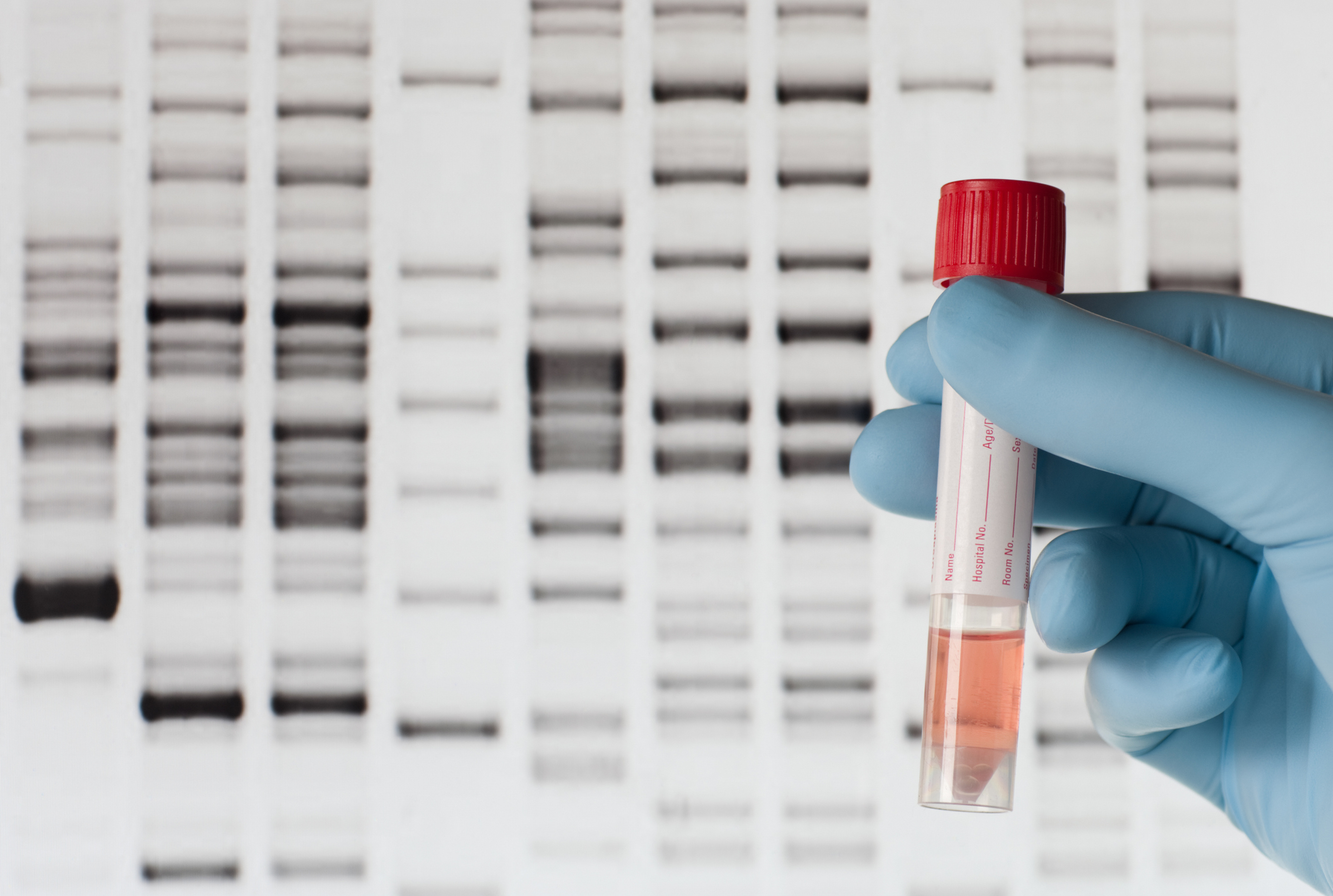
Genetic sequencing companies are the engines underpinning the field of genomics and are a critical component of genetic research and genetic testing. Technology advancements are making sequencing cheaper, faster, and more accurate. Sequencing volumes continue to increase in research and are growing rapidly in clinical applications, with the key drivers including whole-genome sequencing, cancer testing, and recurrence monitoring.
The global genetic sequencing market is projected to grow to roughly $75 billion by 2033. Meanwhile, ARK Investment Management estimates sequencing costs will continue to sharply decline. Falling costs are a critical aspect of opening up new markets and uses.
Four Top genetic sequencing companies in 2025
These are some of the leading "pure-play" genetic sequencing companies:
| Name and ticker | Market cap | Dividend yield | Industry |
|---|---|---|---|
| Illumina (NASDAQ:ILMN) | $20.7 billion | 0.00% | Life Sciences Tools and Services |
| Pacific Biosciences Of California (NASDAQ:PACB) | $567.6 million | 0.00% | Life Sciences Tools and Services |
| 10x Genomics (NASDAQ:TXG) | $2.1 billion | 0.00% | Life Sciences Tools and Services |
| Oxford Nanopore Technologies Plc (OTC:ONTT.F) | $1.7 billion | 0.00% | Life Sciences Tools and Services |
1. Illumina

NASDAQ: ILMN
Key Data Points
Since its 1998 founding, Illumina has become an industry leader with roughly 80% of the global sequencing market and an installed base of more than 22,000 sequencing systems.
Human DNA contains 3.05 billion base pairs. Illumina gained its dominant market position by championing short-read sequencing technology, which breaks DNA into short segments to aid in analysis for genetic research. As the sequencing market expands from research to clinical applications, Illumina is developing tools to help physicians diagnose and select treatments for patients.
The desire to play a larger role in clinical testing led Illumina to make a controversial move in August 2021: It completed the $8 billion acquisition of cancer-testing company Grail despite an ongoing European Commission review over monopoly concerns. Illumunia ultimately spun off Grail as a separate entity in 2024.
The company believes it still has a significant growth opportunity with increasing demand for oncology therapy selection and minimal residual disease detection, as well as a broader adoption of whole genome sequencing. Illumina estimates its total addressable market tops $100 billion in the clinical arena, plus more than $25 billion in research settings.
2. Pacific Biosciences of California

NASDAQ: PACB
Key Data Points
Pacific Biosciences of California (also known as PacBio) is pioneering long-read sequencing technology, which uses longer DNA segments to map the whole genome. Long-read sequencing can uncover parts of the genome missed by short-read sequencing. Although the Human Genome Project was declared “complete” in 2003, it missed about 8% of the genome. PacBio highlighted the benefits of its HiFi whole-genome sequencing technology by helping scientists fill in the remaining 8%.
Illumina tried to acquire PacBio in 2018. However, the Federal Trade Commission opposed the deal. The two companies agreed to terminate their merger agreement in early 2020.
PacBio continues to challenge its much bigger rival. Its latest technology, the Revio sequencing platform, is the company's fastest-growing platform in its history. Like Illumina, it sees major growth opportunities, especially in cancer genomics.
Unlike Illumina, though, PacBio isn't profitable. The company is working to improve efficiency, reduce costs, and lower its cash burn.
3. 10x Genomics

NASDAQ: TXG
Key Data Points
10x Genomics was founded in 2012 to “build solutions for scientific discovery that reveal and address the true complexities of biology and disease.” The company manufactures instruments, consumables, and software for whole-genome sequencing, exome sequencing, and single-cell transcriptomics.
The Chromium platform developed by 10x Genomics is the "gold standard" in single-cell genomic analysis. The company has sold more than 5,800 Chromium systems.
It's also a leader in spatial transcriptomics, which involves analyzing a whole transcriptome (the complete set of RNA in a cell) or targeted gene expression mapped to specific locations in tissue. 10x refers to spatial analysis as understanding "how all the parts fit together" at the cellular level. It markets two spatial systems -- Visium and Xenium.
The company estimates its serviceable addressable market today stands at around $13 billion, with $6 billion of the total in single-cell and $7 billion in spatial. 10x has captured only a sliver of that market, though, with 2024 revenue of $610.8 million.
4. Oxford Nanopore Technologies

OTC: ONTT.F
Key Data Points
Oxford Nanopore Technologies was founded in 2005 by scientists conducting research at the University of Oxford in England. Its focus from the beginning was on nanopore gene sequencing, where DNA is passed through a membrane with tiny holes called nanopores.
The company competes against Illumina and PacBio. One key competitive advantage it offers is that it markets the only sequencing technology that supports real-time analysis.
Although Oxford Nanopore's market share remains relatively small, over the last three years its revenue has increased by a compound annual growth rate of 31%. The company makes around 70% of its revenue from research organizations.
Oxford Nanopore's shares aren't listed on any U.S. stock exchanges. However, U.S. investors can buy the stock on over-the-counter (OTC) markets.
Investing in genetic sequencing stocks
It initially took 13 years and $2.7 billion (in 1991 dollars) to map our DNA as part of the Human Genome Project. Since then, more sophisticated next-generation sequencing (NGS) technology enables an entire genome to be sequenced within a single day at a cost of less than $600.
Sequencing companies have developed different approaches and innovations to read the sequence of base pairs in the genome. Some approaches, such as short-read sequencing, maximize the number of base pairs sequenced in the least amount of time.
Alternatively, other approaches, such as long-read sequencing, map longer pieces of DNA essential to understanding structurally complex regions where many genetic variants are located. Recent improvements in technology, chemistry, throughput, and costs are driving new and hybrid approaches, including integrated long-read and short-read sequencing.
Sequencing companies have the genetic version of the razor-and-blade business model, where instruments are the equivalent of razors and consumables are blades. Instruments are an important element of expanding the business and locking customers into long-term relationships. Consumables often represent 50% or more of sequencing company revenue and include library prep kits, test panels, reagents, and flow cells. Services often contribute 10% or more to revenue and help increase customer value by improving the sequencing process workflow, analysis, and reporting.
As with many technology companies, investors can directly measure and monitor the progress of sequencing companies against specific levers of performance. Examples include:
- Number and type of instruments being placed or under development.
- Growth in customers and partners using the instruments and consumables.
- Level of penetration into research and clinical markets.
- Efforts to lower price points to open new uses and markets.
- Product development and mergers and acquisitions (M&A) to expand testing approaches.
How to choose the right genetic sequencing stocks
Factors to consider in selecting genetic sequencing stocks to buy include:
- The company's current market position and whether its market share is increasing or decreasing.
- The company's financial position, including revenue growth, profitability, and cash flow.
- The company's intellectual property portfolio. Genetic sequencing companies with patents that protect their technology for well into the future could have competitive advantages.
- The stock's valuation, especially in light of its growth prospects. The price-to-earnings-to-growth (PEG) ratio is one key valuation metric that can be used to compare genetic sequencing stocks. Lower PEG ratios indicate more attractive valuations.
How to invest in genetic sequencing stocks
- Open your brokerage app: Log in to your brokerage account where you handle your investments.
- Search for the stock: Enter the ticker or company name into the search bar to bring up the stock's trading page.
- Decide how many shares to buy: Consider your investment goals and how much of your portfolio you want to allocate to this stock.
- Select order type: Choose between a market order to buy at the current price or a limit order to specify the maximum price you're willing to pay.
- Submit your order: Confirm the details and submit your buy order.
- Review your purchase: Check your portfolio to ensure your order was filled as expected and adjust your investment strategy accordingly.
Related investing topics
It’s been more than 20 years since the completion of the Human Genome Project. However, we are in the early innings of a genomic revolution that could create many companies with multibillion-dollar market capitalizations. This won’t happen overnight, but for patient buy-and-hold investors, genetic sequencing company stocks could be a healthy addition to your portfolio.


